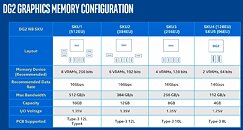
Intel Plans May-June 2022 Launches of Arc "Alchemist" Desktop Graphics Cards
Intel is reportedly targeting early-Summer (May-June) for the launch of its ambitious attempt at AAA gaming graphics cards for desktops, the Arc "Alchemist" series, based on the Xe-HPG graphics architecture, according to a report by Igor's Lab. Product launches are expected anywhere between May 2 and June 1, so one could expect some market availability within Summer. The Arc "Alchemist" series is designed to be sold through a handful board partners Intel already has strong industry relations with. The Arc "Alchemist" lineup will initially target four market segments, including the performance segment, meant for maxed out AAA gaming, with XeSS possibly even enabling 4K Ultra HD gameplay. Intel's entry to the gaming graphics space is expected to introduce an element of competitive pressure against both NVIDIA and AMD, as the company has the financial muscle to keep investing in this market if it tastes success with "Alchemist."












































